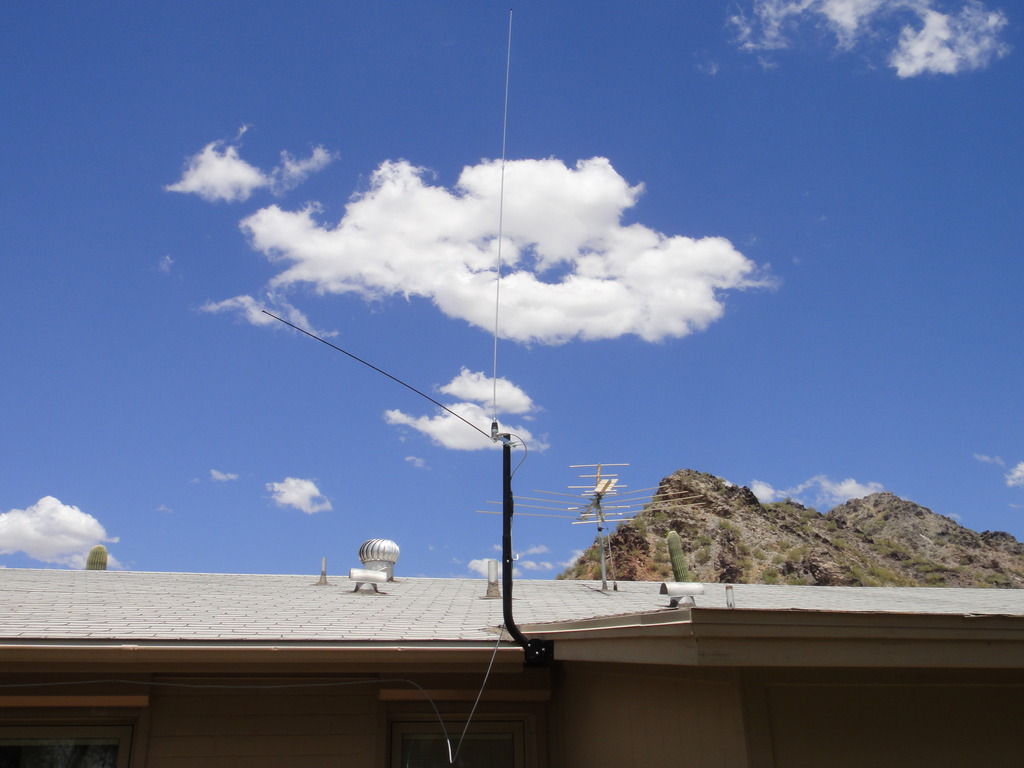Base station antennas are fixed installations for receiving radio signals, and are usually on tall structures placed at a great height over the ground. This makes them easy targets for lightning strikes, as they’re usually high structures made of a conductor. Grounding your base station antenna requires some reading on both relevant regulations and some of the underlying physics. These principles apply to both Citizens Band (CB) and High Frequency (HF) base stations, though CB stations can get by with lesser protections in this arena.
Electrical Grounding
The leading hazard for antenna base stations is lightning, and to a lesser extent, electrical faults. Electrical grounding, at its simplest, means giving an easy path for electrical current to follow from the top of your antenna array to a point deep in the earth; this path should be more conductive than the rest of the antenna. By doing this, a lightning strike hitting your antenna won’t damage the components of your radio gear, and it makes it much less likely that your antenna will constitute an electrical or fire hazard.
Ground Wire Requirements
The first rule of grounding is to direct the current to a single point inserted into the ground. The ideal case is a metal pole driven eight to ten feet underground; this ensures that even in the warmest and driest of climates, it will always be in contact with damp earth. Your grounding cable should be the highest conductive material, with the greatest surface area to volume ratio you can get. The material recommended by the Amateur Radio Relay League is actually 1.5-inch wide #26 American Wire Gauge (AWG) copper strap. Test the conductivity with a voltmeter on a regular basis, and check for signs of corrosion.
Configuring Your Ground Point
A ground point will be mounted on the wall of your base station, and will usually be a copper plate, with a connection point for the copper strap to your in-the-ground conductor. Components for your radio array will have their ground-lead wires run into the top of this plate, while the outbound strap will be installed by running from the bottom edge of your ground plate, and connecting the other end to the ground point (the pole in the ground mentioned earlier.) Always check your inbound leads and outbound leads with a voltmeter. Always avoid bending cables going into the ground plate; every twist and turn allows the current running through them to generate magnetic fields, and increases inductive heating. Always use the shortest, straightest cable drops you can. The basic concept is that you want your ground plate and ground point combination to be the most conductive path in the event of a lightning strike. Anything that either retards the flow of electricity to the ground, or is more conductive than your ground line defeats the purposes, and you’ll be channeling a lightning strike into your equipment, or possibly triggering a house fire.
Radio Frequency Grounding
Depending on your radio’s frequency, local environments, and your antenna length, you may need to ground your antenna setup against radio frequency interference, or an “RF ground.” This type of grounding is separate and distinct from the lightning and electrical grounding mentioned above. An RF ground requires a grounded cable running from the antenna to the receiver, and a second cable running from the receiver to the ground. Because the nature of radio frequency interference varies considerably by local environment, some trial and error may be necessary, but it will reduce the radio signal noise your base station picks up or generates.
by Ken Burnside
Views: 365


my husband has an antron99 antenna on the roof that is affixed to the roof with a metal strap that has holes in it dont know the name of it, with it is grounded to a pole 10 ft with copper wire #12 on the ground he is not getting out. what can he do to fix it to get out
sorry, i can’t sure